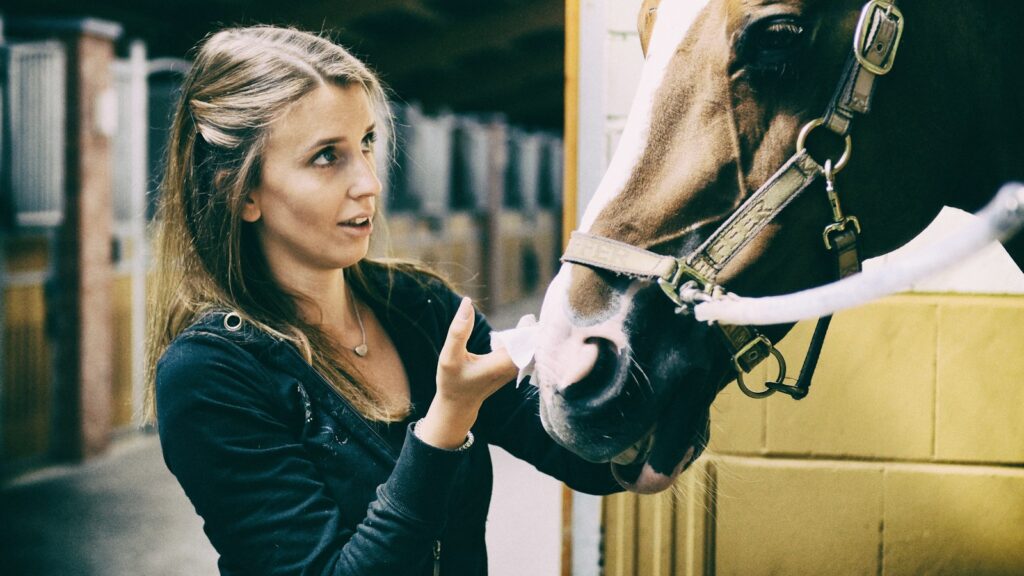Trust forms the cornerstone of any healthy human-horse relationship. When working with horses that have experienced trauma, neglect, or improper handling, rebuilding that broken trust requires patience, consistency, and specialized techniques. A horse with trust issues may display behaviors ranging from subtle evasion to dangerous reactions like bolting, kicking, or rearing. Understanding the psychology behind these behaviors allows handlers to address the root causes rather than merely managing symptoms. This comprehensive guide explores effective approaches to rehabilitating horses with trust issues, helping them become confident, willing partners.
Understanding the Psychology of Equine Trust Issues

Horses are prey animals with highly developed fight-or-flight responses that have evolved over millions of years to keep them safe from predators. When a horse experiences trauma or mistreatment, these natural survival mechanisms become heightened, creating defensive behaviors that protect them from perceived threats. Unlike humans who can rationalize past experiences, horses live primarily in the present moment but carry emotional memories that influence their reactions to similar situations or triggers. Many trust issues stem from experiences where the horse learned that humans were unpredictable, painful, or frightening sources of stress. Understanding this fundamental difference in perception helps handlers approach rehabilitation with the appropriate mindset, recognizing that what appears as “stubbornness” or “bad behavior” is a manifestation of fear-based self-preservation.
Recognizing Signs of Trust Issues in Horses
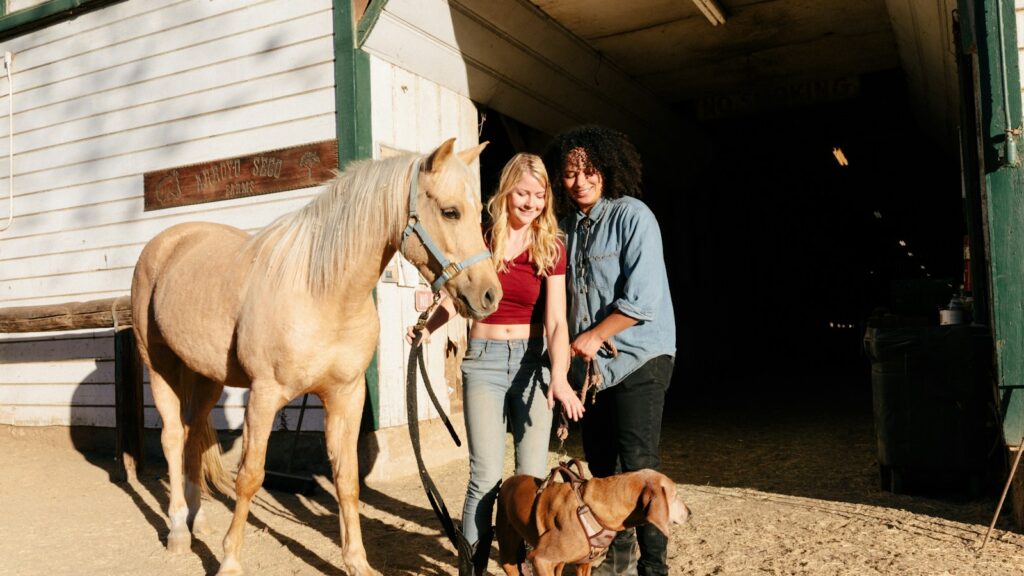
Identifying trust issues requires careful observation of both obvious and subtle behavioral cues. Common indicators include flinching or tensing when approached, pinned ears, whites of the eyes showing (whale eye), elevated head carriage, and tail swishing in non-flight situations. More concerning behaviors might include refusing to be caught, pulling back when tied, reluctance to load into trailers, or aggressive responses like striking, biting, or kicking when handled. Some horses become “shutdown,” appearing calm but internally experiencing significant stress, identifiable through rigid body posture, shallow breathing, and vacant expressions. Physical signs such as teeth grinding, excessive sweating, or trembling often accompany these behavioral manifestations. By developing awareness of these indicators, handlers can better assess progress during rehabilitation and adjust their approach accordingly.
Creating a Safe Environment for Rehabilitation
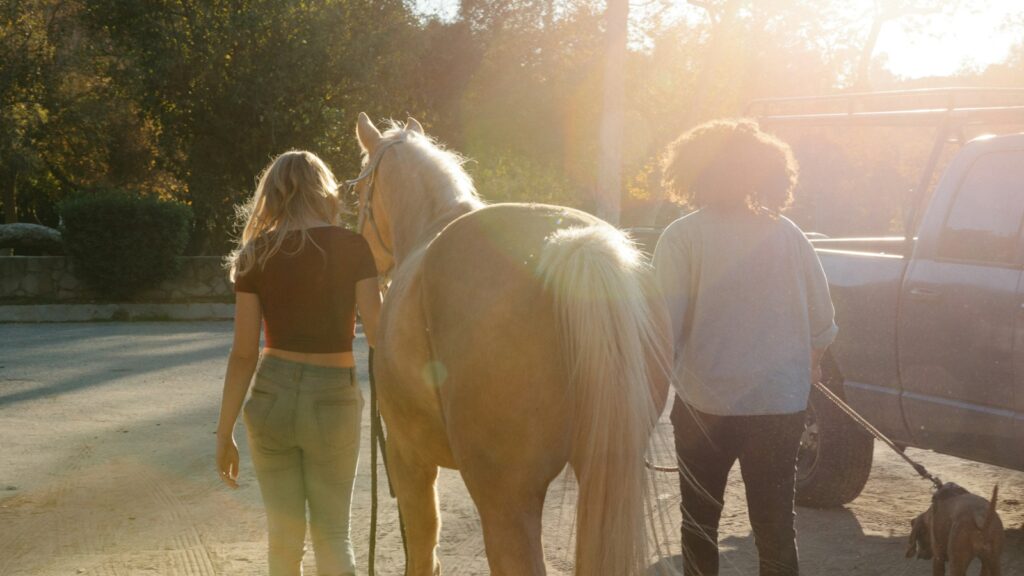
The rehabilitation process begins with establishing a consistent, predictable environment where the horse can begin to feel secure. This includes maintaining regular feeding schedules, turnout routines, and handling protocols that the horse can anticipate. Physical safety considerations are equally important—ensure the horse’s living area is free of hazards, features secure fencing, and provides appropriate shelter from the elements. Careful selection of companions can significantly impact a nervous horse’s recovery; sometimes a calm, confident “mentor” horse can help teach appropriate responses to new situations. The handler should evaluate the horse’s immediate surroundings for potential triggers and gradually desensitize the animal to necessary environmental elements that cause stress. Creating predictability in the horse’s world forms the foundation upon which trust can eventually be rebuilt.
Establishing Yourself as a Trustworthy Leader

Horses naturally seek leadership and security within their social structure, making your role as a confident, consistent leader essential to building trust. Avoid emotional reactions when working with troubled horses—maintain calm, deliberate movements and a steady energy level regardless of the horse’s behavior. Your body language must consistently communicate clear boundaries while remaining non-threatening; square shoulders, upright posture, and deliberate movements help establish your role as leader without triggering defensive responses. Develop awareness of your own emotional state, as horses are remarkably sensitive to human tension or anxiety, which they often mirror or interpret as danger signals. By embodying the characteristics of a trustworthy leader—fairness, consistency, clear communication, and emotional stability—you provide the framework within which the horse can gradually surrender its defensive postures and begin to trust your guidance.
The Art of Pressure and Release Training

Pressure and release training forms the cornerstone of effective rehabilitation for horses with trust issues, teaching them that cooperation leads to comfort. This technique involves applying gentle pressure—physical, spatial, or energetic—and immediately releasing it when the horse offers even the slightest attempt toward the desired response. The timing of the release is crucial; it must occur precisely when the horse makes an effort, however small, in the right direction. Begin with extremely minimal pressure to avoid triggering defensive responses, gradually increasing intensity as the horse becomes more confident. This approach teaches horses that they have control over their comfort through appropriate responses rather than through defensive behaviors. When implemented consistently, pressure and release training creates positive associations with human interaction while respecting the horse’s need for clear communication and fair leadership.
Groundwork Exercises to Build Confidence

Structured groundwork provides essential opportunities to develop communication and trust before progressing to more complex interactions. Start with basic leading exercises, teaching the horse to match your pace, stop promptly, and back up with light cues. Incorporate changes of direction and transitions between gaits to develop responsiveness while maintaining appropriate personal space boundaries. Lunging and liberty work allow the horse to express themselves more freely while learning to respond to your body language and vocal cues from a distance that feels safer for them. Obstacles like poles, tarps, bridges, and other novel objects create opportunities for the horse to face mild challenges with your support, gradually building their confidence through successful experiences. These groundwork foundations establish a common language between handler and horse that will transfer to all future interactions, creating a framework of mutual understanding and respect.
Touch Desensitization Techniques
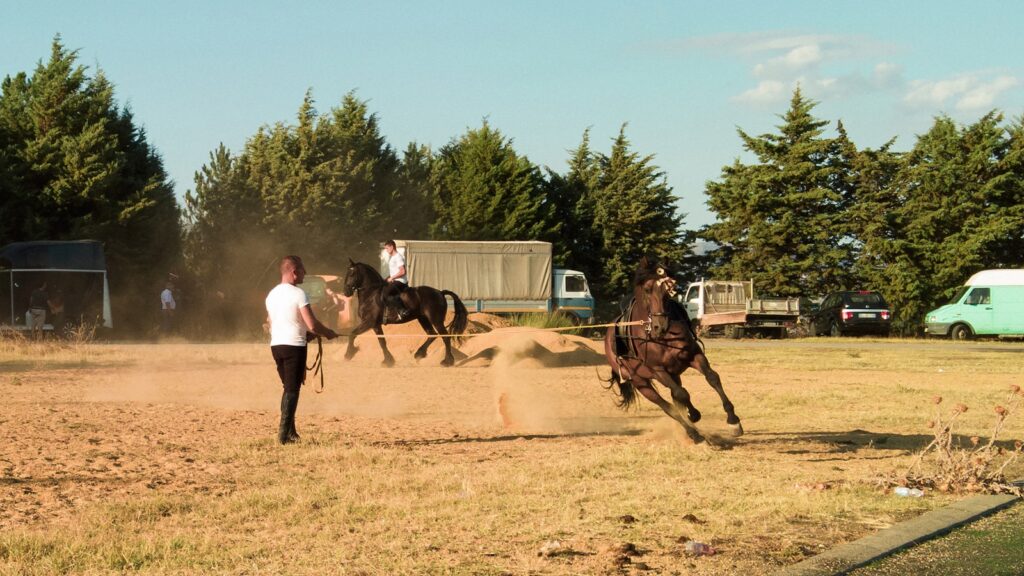
Many horses with trust issues struggle with being touched in specific areas due to past negative experiences. Systematic desensitization involves gradually introducing touch in a non-threatening manner, beginning with areas the horse accepts comfortably and slowly expanding to more sensitive zones. The approach-retreat method—where you briefly touch an area and immediately remove your hand before the horse reacts negatively—proves particularly effective for hypersensitive animals. Tools like soft grooming brushes, flexible wands, or specially designed desensitizing equipment can provide intermediary contact that feels less threatening than direct human touch. Always watch for subtle relaxation signals like lowered head, softer eye, licking and chewing, or sighing, which indicate the horse is processing and accepting the new experience. Through patient, incremental progress with touch desensitization, even severely defensive horses can learn that human contact predicts comfort rather than pain or fear.
Building Trust Through Positive Reinforcement
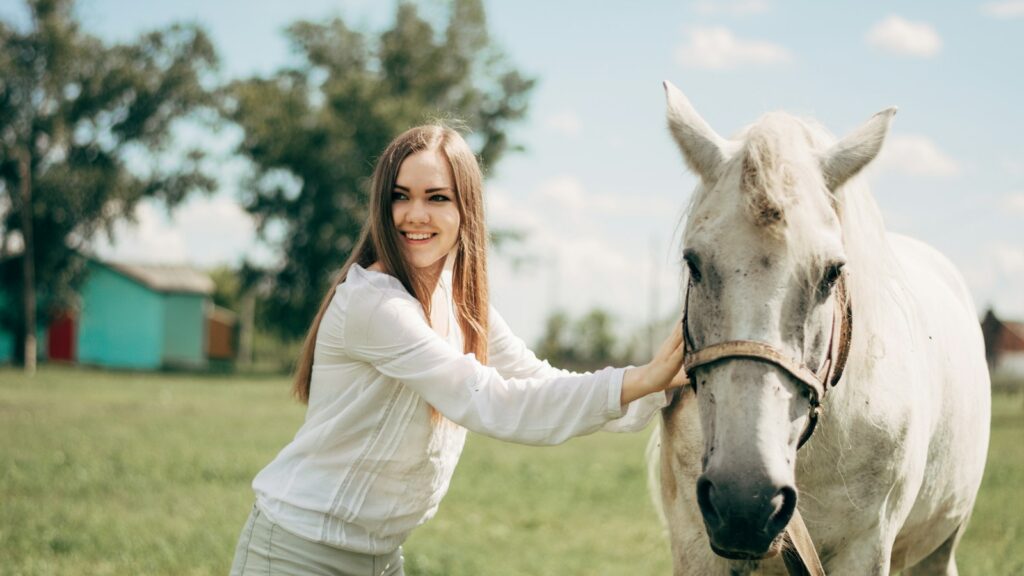
Positive reinforcement training creates powerful associations that can transform a fearful horse’s perception of human interaction. This approach involves rewarding desired behaviors with something the horse values—typically food treats, but sometimes scratches, verbal praise, or release of pressure, depending on the individual’s preferences. Clicker training, where a distinct sound marks the exact moment of correct behavior, provides precise communication that helps the horse understand exactly what earned the reward. Begin with simple behaviors the horse can easily accomplish, setting them up for success and building their confidence through achievement. Unlike traditional methods that focus primarily on pressure and release, positive reinforcement actively gives the horse something to look forward to, creating enthusiasm for the training process. By balancing traditional techniques with strategic positive reinforcement, handlers can accelerate trust-building with particularly traumatized or shut-down horses.
Working Through Specific Fear Triggers

Most horses with trust issues have specific scenarios, objects, or handling procedures that trigger particularly strong fear responses. Systematic counter-conditioning involves changing the horse’s emotional association with these triggers through carefully managed exposure and positive experiences. Begin by identifying exactly what element causes the fear response—sometimes what seems obvious (like clippers) might be a component of the experience (the sound or the feeling of vibration). Break down frightening procedures into tiny, manageable steps that can be introduced individually, always staying below the threshold that causes panic. Utilize distance, barriers, or protective equipment as needed to ensure safety while gradually decreasing these supports as the horse’s comfort increases. Document specific triggers and progress to maintain consistency between handlers and establish realistic timelines for rehabilitation of particularly deep-seated fears.
Overcoming Handling and Restraint Issues
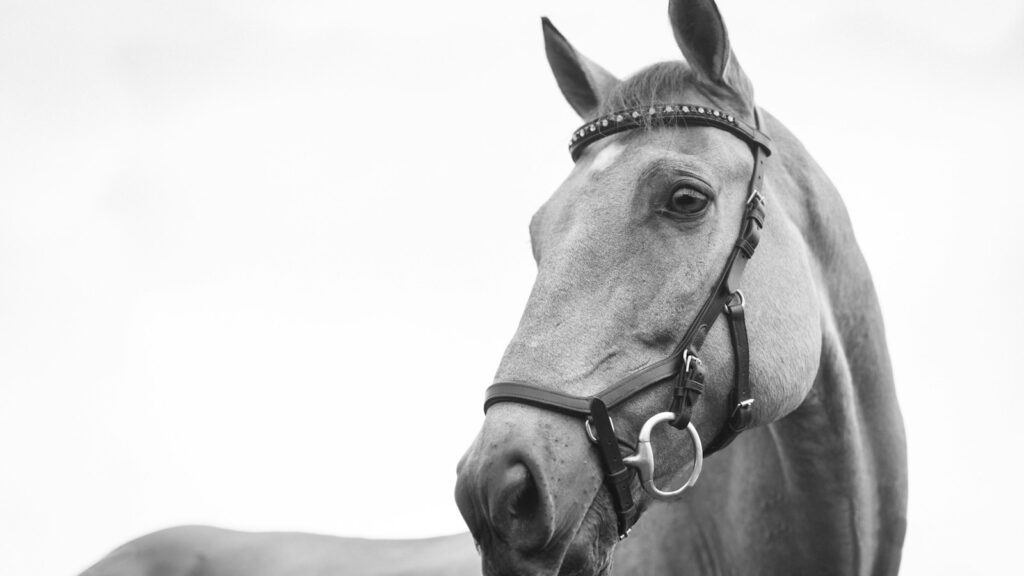
Many horses with trust issues exhibit dangerous behaviors when restrained or handled in specific ways, such as haltering, leading, tying, or restraint for veterinary procedures. Begin by identifying specifically where in the process the horse becomes uncomfortable, then design incremental approximations that build toward the complete behavior. For horses that resist being caught, create positive associations with the halter through feeding or rewards when it appears, gradually working up to touching the horse with it and eventually placing it on without resistance. For horses that pull back when tied, progressive training might include teaching solid stand-still cues, practicing with quick-release knots, and utilizing safety equipment like breakaway halters until the horse develops confidence. Focus on teaching the horse to yield to pressure rather than fight against it, rewarding the slightest give in the desired direction to establish new response patterns.
When to Seek Professional Help
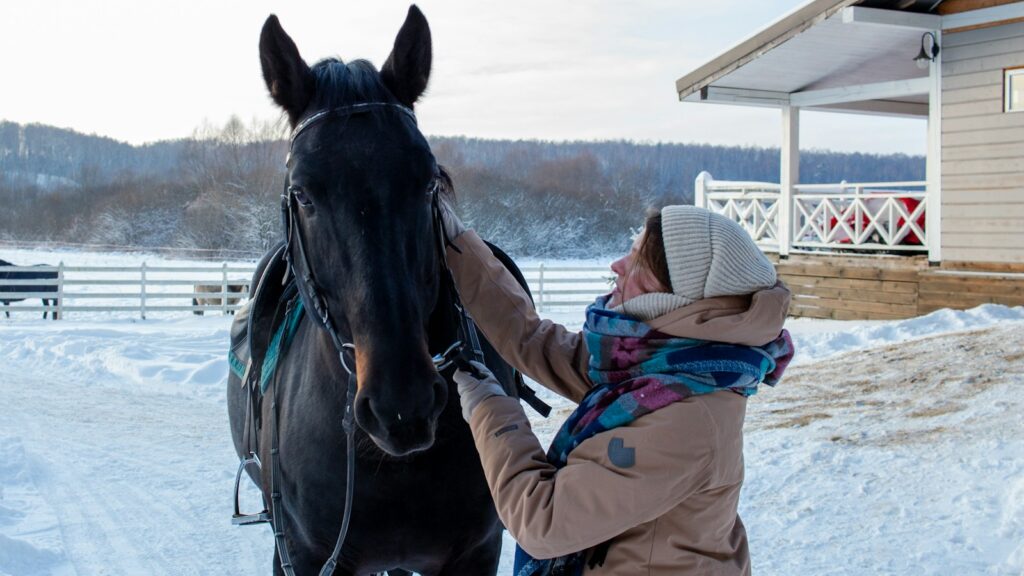
While many trust issues can be addressed by committed owners, certain situations require professional intervention for safety and effectiveness. Consider consulting an experienced trainer when dealing with horses that exhibit dangerous defensive behaviors such as striking, rearing, or aggressive charging, as these can pose serious safety risks to inexperienced handlers. Horses with complex trauma histories, particularly those that have experienced severe abuse or developed deeply ingrained defensive patterns, often require the nuanced approach of specialists trained in equine behavior modification. Physical issues requiring veterinary intervention may underlie some behavioral problems—pain from dental problems, musculoskeletal issues, or internal disorders can manifest as apparent trust issues that won’t resolve without addressing the medical cause. A qualified professional can provide an objective assessment of your specific situation, create a structured rehabilitation plan, and teach you the skills needed to continue the rehabilitation process safely.
Maintaining Progress and Preventing Regression
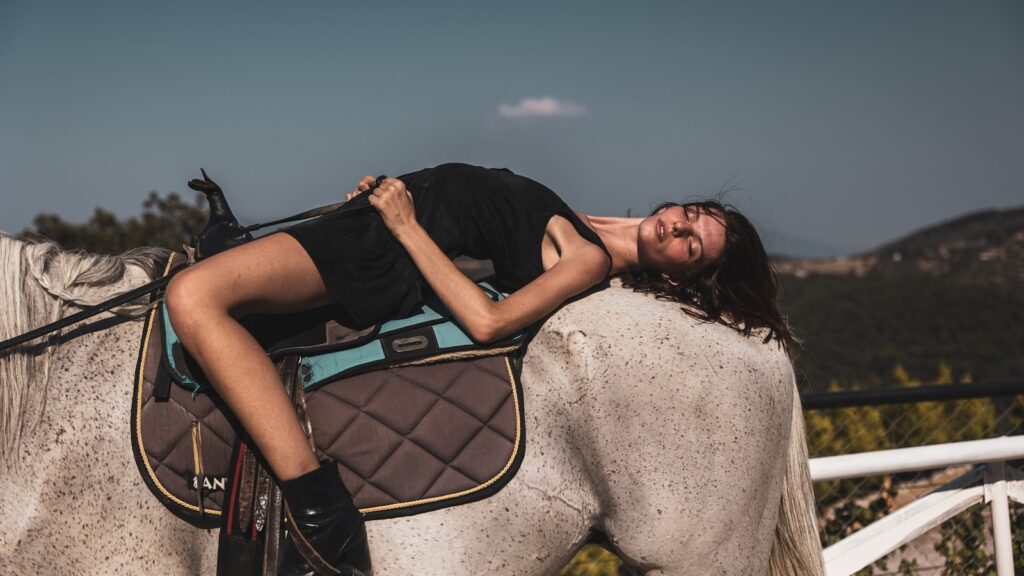
Rehabilitating a horse with trust issues isn’t a linear process, and maintaining gains requires ongoing attention to consistency and reinforcement. Document specific procedures, techniques, and triggers in detail so all handlers can maintain the same approach, preventing confusion that could undermine progress. Gradually increase environmental challenges once basic trust is established, exposing the horse to new situations, handlers, or environments while providing the support needed for success. Recognize that stress, changes in routine, or re-exposure to trauma triggers can cause temporary regression, requiring handlers to step back to earlier training stages rather than pushing forward. Create a support network of knowledgeable equine professionals and fellow horse owners who understand the rehabilitation process and can provide encouragement during inevitable plateaus or setbacks. With consistent reinforcement of positive associations and appropriate handling, even severely traumatized horses can develop into confident, trusting partners.
Long-term Management Considerations

Successfully rehabilitating horses with trust issues often requires specific management considerations even after significant progress has been made. Establish clear protocols for introducing new handlers, ensuring they understand the horse’s history and specific handling requirements before working independently with the animal. Consider appropriate career paths that match the horse’s temperament and capabilities; some formerly mistrustful horses thrive in structured disciplines with consistent expectations, while others do better in less demanding roles. Maintain awareness of potential emotional triggers that might resurface during stressful situations like competitions, transportation, or veterinary procedures, and have strategies prepared to address these challenges. Create environmental stability through consistent routines, compatible herd dynamics, and appropriate exercise opportunities that support the horse’s continued emotional well-being. By respecting the horse’s individual needs while gradually expanding their comfort zone, handlers can support continued growth in confidence and trust throughout the animal’s lifetime.
conclusion

Rebuilding trust with a traumatized or mistreated horse represents one of the most challenging yet rewarding journeys in horsemanship. Through patience, consistency, and appropriate techniques, handlers can help these special horses transform from frightened, defensive creatures into willing, confident partners. The process requires not only skill but also emotional intelligence and genuine compassion for the horse’s perspective. While progress may sometimes seem frustratingly slow, each small breakthrough strengthens the foundation for future success. The deep bond that eventually develops with a formerly mistrusting horse offers unique satisfaction, knowing you’ve helped heal invisible wounds and restored the animal’s capacity for connection. The journey ultimately teaches handlers as much about themselves as about horsemanship, fostering greater empathy, patience, and communication skills that transfer to all aspects of equine relationships.

